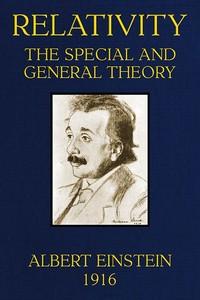Read this ebook for free! No credit card needed, absolutely nothing to pay.
Words: 87251 in 18 pages
This is an ebook sharing website. You can read the uploaded ebooks for free here. No credit cards needed, nothing to pay. If you want to own a digital copy of the ebook, or want to read offline with your favorite ebook-reader, then you can choose to buy and download the ebook.


: The Atlantic Monthly Volume 15 No. 88 February 1865 A Magazine of Literature Art and Politics by Various - American periodicals The Atlantic Monthly
nted, but with very beautiful hands,--hands which betrayed the work of a master; and he conjectured this to be some valuable picture, hastily covered with coarse work to deceive the emissaries of a conqueror when they came to select and carry off the most valuable pictures from the galleries of the conquered city. He gave his agent orders to purchase it, and when in his possession a little careful work removed the upper colors and discovered one of the most beautiful heads ever painted even by Raphael. Though it may and will seem extravagant, I am satisfied that there are several heads by Allston that would lose nothing by comparison with this admirable work. Indeed, though M. Kestner's picture is a portrait, it is a work so entirely in the same class with the "Beatrice," the "Rosalie," the "Valentine," and some other works of Allston, in sentiment and execution, that the comparison is fairly challenged.
"Rosalie" is different from "Beatrice." She seems listening to music; and so the little poem written by the author, and recited by him when showing the picture newly finished to his friends, describes her. The face indicates, not a dream of sentiment, like that of "Beatrice," but rather a rapture. She is "caught on a higher strain." She is a creature as passionate as tender; more like Juliet than like Miranda; fit to be the love of a poet, and to reward his song with the overflowing cup of love. In this figure also beauty melts into feeling. The composition of color is masterly; in the draperies it is inlaid in opposing fields, by which means the key of the whole is raised, and the rising rapture of expression powerfully seconded. Did I not fear to insist too much on what may be only a private fancy, I should say that these colors reverberate like some rich orchestral strain of music.
"The Roman Lady reading." This Roman lady might be the mother of the Gracchi, so stately and of so grand a style is she. But she is a modern, for she reads from a book. She might be Vittoria Colonna, the loved of Michel Angelo, so grave, so dignified is her aspect. The whole figure is reading. A vital intelligence seems to pass from the eyes to the book. Nothing tender in this woman, who, if a Roman, takes life after the "high Roman fashion." The beauty and perfect representation of the hands should be noticed here, as well as in the "Rosalie" and "Beatrice."
"Triumphal Song of Miriam on the Destruction of Pharaoh and his Hosts in the Red Sea." This is a three-quarter length figure. She stands singing, with one hand holding the timbrel, the other thrown aloft, the whole form up-borne by the swelling triumphal song. I hardly know what it is in this picture which takes one back so far into the world's early days. The figure is neither antique nor modern; the face is not entirely of the Hebrew type, but the tossing exultation seems so truly to carry off the wild thrill of joy when a people is released from bondage, that it is almost unnecessary to put the words into her mouth,--"Sing ye to the Lord, for He hath triumphed gloriously; the horse and his rider hath He thrown into the sea." This figure is dramatically imaginative. In looking at it, one feels called on to sing triumphal songs with Miriam, and not to stand idly looking. The magnetism of the artist at the moment of conception powerfully seizes on the beholder.
"The Valentine" is described by William Ware as follows.
In 1839 there was an exhibition in Boston of such of the works of Allston as could be borrowed for the occasion. This was managed by the friends of the artist for his benefit. The exhibition was held in Harding's Gallery, a square, well-lighted room, but too small for the larger pictures. It was, however, the best room that could be procured for the purpose. Here were shown forty-five pictures, including one or two drawings. There was something peculiarly happy in this exhibition of works by a single mind. On entering, the presence of the artist seemed to fill the room. The door-keeper held the door, but Allston held the room; for his spirit flowed from all the walls, and helped the spectator to see his work aright. This accompaniment of the artist's presence, which hangs about all truly artistic works, is disturbed in a miscellaneous collection, where jarring influences contend, and the worst pictures outshine and outglare the best, and for a time triumph over them. But in this exhibition no such disturbance met one, but rather one was received into an atmosphere of peace and harmony, and in such a temper beheld the pictures.
The largest picture on the walls was "The Dead Man restored to Life by touching the Bones of the Prophet Elisha." This is a great subject, greatly treated, full of power and expression.
The next in size was "Jeremiah dictating his Prophecy to Baruch, the Scribe." This picture contains two figures, both seated. It is a picture the scale of which demands that it be seen from a distance, though its perfect execution makes a nearer view desirable also. If it were seen at the end of some church aisle, through arches, and with a good light upon it, the effect would be much enforced. It is a picture of extraordinary expression. The Prophet, the grandest figure among the sons of men, with those strange eyes that Allston loved to paint,--eyes which see verities, not objects,--is looking not upward, but forward, not into space, but into spirit; with one hand raised, as if listening, he receives the heavenly communication, which the beautiful youth at his feet is writing in a book. The force and beauty of this work are unsurpassed. It is a perfect picture: grand in design, perfect in composition, splendid in color, successful in execution, and the figures full of expression,--for the inspiration of the Prophet seems to overflow into the Scribe, whose attitude indicates enthusiastic receptiveness; it is, indeed, in every pictorial quality that can be named, admirable.
The other pictures in this collection, with the exception of the large Swiss landscape, were of cabinet size. Some of them have been already described in this paper. I will give Mr. Ware's description of "Lorenzo and Jessica," and of "The Spanish Girl." Mr. Ware says:--
"But perhaps the most exquisite examples of repose are the 'Lorenzo and Jessica,' and 'The Spanish Girl.' These are works also to which no perfection could be added,--from which, without loss, neither touch nor tint could be subtracted. We might search through all galleries, the Louvre or any other, for their equals or rivals in either conception or execution. I speak of these familiarly, because I suppose you all to be familiar with them. The first named, the 'Lorenzo and Jessica,' is a very small picture, one of the smallest of Allston's best ones; but no increase of size could have enlarged its beauty or in any sense have added to its value. The lovers sit side by side, their hands clasped, at the dim hour of twilight, all the world hushed into silence, not a cloud visible to speck the clear expanse of the darkening sky, as if themselves were the only creatures breathing in life, and they absorbed into each other, while their eyes, turned in the same direction, are turned upon the fading light of the gentle, but brilliant planet, as it sinks below the horizon: the gentle brilliancy, not the setting, the emblem of their mutual loves. As you dwell upon the scene, your only thought is, May this quiet beauty, this delicious calm, never be disturbed, but may
'The peace of the scene pass into the heart!'
In the background, breaking the line of the horizon, but in fine unison with the figures and the character of the atmosphere, are the faint outlines of a villa of Italian architecture, but to whose luxurious halls you can hardly wish the lovers should ever return, so long as they can remain sitting upon that bank. It is all painted in that deep, subdued, but rich tone, in which, except by the strongest light, the forms are scarcely to be made out, but to which, to the mind in some moods, a charm is lent, surpassing all the glory of the sun.
Free books android app tbrJar TBR JAR Read Free books online gutenberg
More posts by @FreeBooks

: Relativity: The Special and General Theory by Einstein Albert Lawson Robert W Robert William Translator - Relativity (Physics) Physics


: Essays on God and Freud by Vaknin Samuel Rangelovska Lidija Editor - Religion; God; Psychoanalysis; Freud Sigmund 1856-1939






